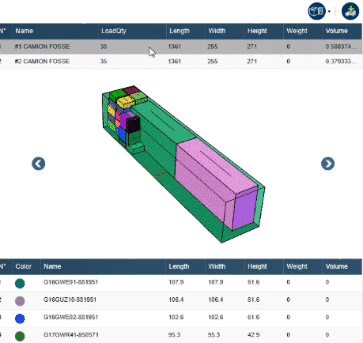

Faced with the shortage that is affecting air and sea transport and which is beginning to spread to road transport, the leader in TMS software DDS Logistics has unveiled a new module for optimizing the filling of containers and trucks.

How long will the transport shortage that is currently affecting the air and maritime worlds and soon the road sector last? How can we better optimize our transport capacities, regardless of the mode operated? How can we simultaneously optimize our costs and our environmental impact? These are questions that are shaking up the world of industry and distribution.
To support the latter, in the face of declining transport capacities and rising freight rates, DDS Logistics has integrated into its DDS Shipper TMS software a new module for simulating and optimizing the filling and loading of trucks and containers.
This new module relies on the power of the DDS Shipper TMS to handle both the upstream flow, through its ability to exchange and upload information transmitted by suppliers, and the downstream flow through its connection with the ERP and the management of product data associated with transport data.
Thus, based on the unit dimensions of the packages, pallets, cylinders or any other support used, the ideal filling is calculated directly through the DDS Shipper TMS. The module then prepares the loading instructions and guides the employees step by step through the stuffing operations.
In the end, the shipper optimizes the space of his complete container, identifies all the products and orders awaiting departure and sizes his needs to the best of his ability for an ideal filling rate. Finally, the module also allows the calculation of the axle tonnage in compliance with legal loads.
Through this new module, DDS Logistics helps its customers to make the best use of available capacity in this period of shortage and to reduce delivery times to customers, thus improving customer service quality.
The solution is deployed at a heavy industry specialist constrained by varied product types, production outside the usual axes and limited capacity on the market. Very quickly adopted by the users, the module offers gains of 5 to 10% on the filling rate as well as a reduction of CO2 emissions per transported product, all ensuring a very fast ROI of the module.

